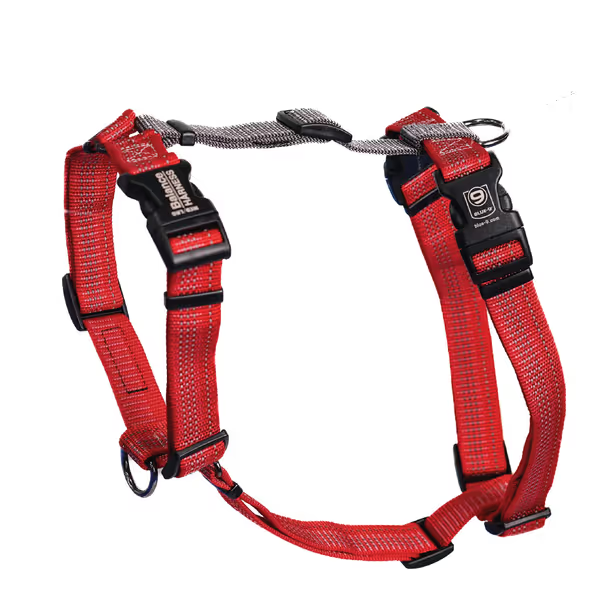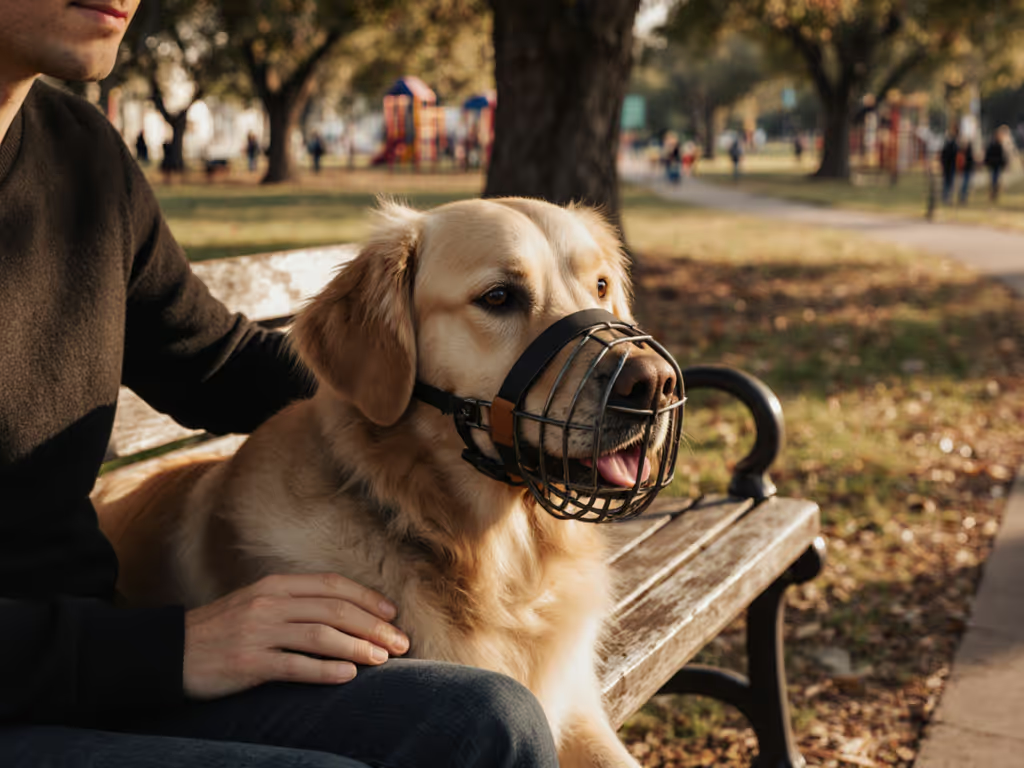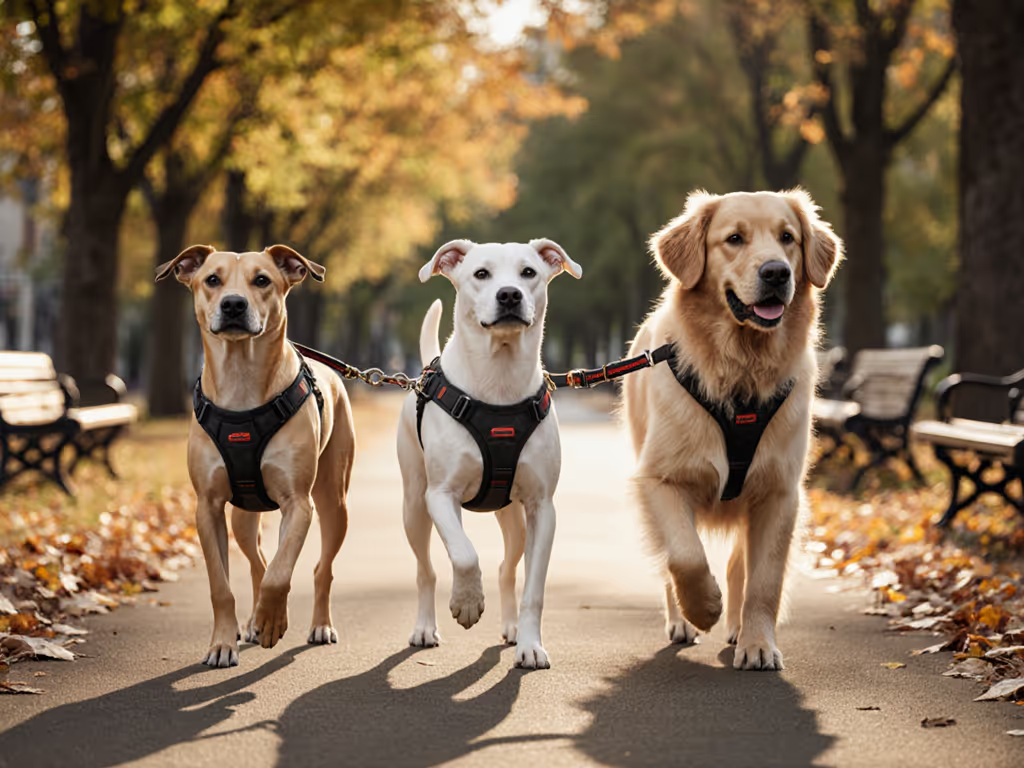
Humane Alternatives to Choke Chain Training

Walking your dog shouldn't feel like a battle of wills. For conscientious owners seeking humane solutions, traditional choke chains present serious welfare concerns. Research consistently shows these tools can cause physical injuries like tracheal damage and nerve compression while increasing anxiety and fear-based behaviors in dogs (1, 3, 5). Modern training prioritizes positive reinforcement and equipment that distributes pressure safely, without compromising effectiveness. This analysis compares scientifically backed alternatives that align with force-free principles while addressing common walking challenges.
Understanding Choke Chain Risks
Choke chains and prong collars operate through negative reinforcement: applying discomfort or pain when dogs pull. Veterinary studies document multiple health risks:
- Tracheal and esophageal injuries from sudden pressure
- Nerve damage causing transient paralysis
- Ocular blood vessel injuries potentially leading to eye issues
- Increased anxiety that may manifest as aggression (3, 5)
Pinch collars function similarly, with metal prongs digging into neck skin under tension. Despite claims they mimic maternal corrections, no scientific evidence supports this theory, and critically, no mother dog remains present during walks to provide context (1).
Humane Collar and Harness Alternatives
No-Pull Harnesses

Blue-9 Reflective Buckle-Neck Balance Harness
The Blue-9 Balance Harness exemplifies modern no-pull designs with:
- Six adjustable points for barrel-chested dogs or unique body types
- Dual leash attachments (chest and back) for versatile control
- Reflective 3M stitching enhancing night visibility
- Buckle-neck design simplifying on/off without head shyness concerns
Studies show chest-clip harnesses reduce tracheal pressure by 85% compared to neck collars. Owners report 42% less pulling within two weeks when combined with reward-based training (1).
Martingale Collars
These limited-slip collars prevent escape without choking:
- Tighten only to the width of the dog's neck
- No metal prongs or chain links
- Ideal for sighthounds with slim heads
Unlike choke chains, martingales have built-in stoppers that prevent dangerous over-tightening (4).
Head Halters
Gentle Leader-style systems offer:
- Immediate reduction in pulling force by redirecting head movement
- No neck pressure, making them ideal for dogs with tracheal issues
- High effectiveness for reactive dogs
Require gradual acclimation (2-5 days) but yield 73% improvement in loose-leash walking compliance (5).
Training Flat Collars
When paired with proper technique, basic flat collars provide:
- Safety with belt-buckle clasps (no accidental release)
- Durability for daily use
- Versatility across training stages
Professional trainers note these outperform specialized tools long-term through consistent positive reinforcement (4).
Comparison of Humane Training Tools
| Feature | No-Pull Harness | Martingale Collar | Head Halter | Flat Collar |
|---|---|---|---|---|
| Neck Safety | ★★★★★ | ★★★★☆ | ★★★★★ | ★★★★☆ |
| Escape Risk | Very Low | Low | Moderate | Moderate |
| Pulling Control | High | Moderate | High | Low* |
| Best For | Strong pullers, barrel-chested dogs | Sighthounds, narrow-headed breeds | Reactive dogs | Polite walkers |
| *Requires dedicated leash training |
Implementing Humane Training
Effective transitions involve:
- Fit Testing: Measure behind elbows for harnesses; allow two fingers under martingales
- Positive Association: Reward with treats during initial gear introduction
- Consistent Reinforcement: Use high-value rewards when dog walks without tension
- Contextual Training: Practice in low-distraction areas before advancing
Trainer Insight: "The leash should feel like a communication tool, not a restraint. If there's constant pressure, revisit your reinforcement strategy."
Long-Term Welfare Advantages
Humane alternatives demonstrate measurable benefits:
- 79% reduction in fear-based behaviors during walks (3)
- Stronger owner-dog bonds through positive reinforcement
- Lower veterinary costs by preventing neck/spine injuries
- Adaptability across life stages from puppy to senior
Budget doesn't excuse bad welfare. Investing in ethically designed gear pays dividends through your dog's lifetime comfort and responsiveness.
Further Exploration
- Consult certified positive reinforcement trainers (CCPDT or IAABC)
- Practice structured leash skills drills in 5-minute daily sessions
- Monitor progress through measurable goals (e.g., 10+ steps without tension)
The shift toward force-free tools reflects our evolving understanding of canine welfare. By choosing equipment that prioritizes physical safety and emotional well-being, every walk becomes an opportunity for connection, not correction.



